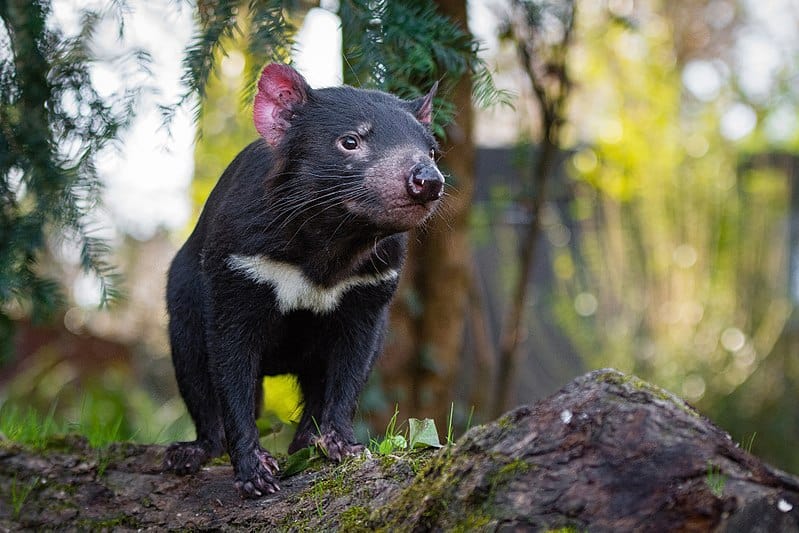
Tasmanian Devil Facts
- The Tasmanian Devil long ago became a symbol of aggressiveness and savage behavior. While fact often becomes mistaken for fiction, in its case this symbolism is indeed based in fact. That’s because it tends to have an extremely aggressive nature.
- The impressive creature also represents a most unusual type of animal. That holds true because the remarkably animal classifies as a carnivorous marsupial mammal. The amazing animal also presently ranks as the largest such species still in existence.
- Sadly, however, the Tasmanian Devil may not hold that particular distinction for long. It once appeared numerous throughout a comparatively wide range of habitation. The creature now exists almost exclusively in only one isolated location in the world.
- Its numbers dwindled dramatically during the 19th and early 20th centuries, though. But, the unique mammal finally became a protected species in 1941. Consequently, the population of the species slowly began to recover, at least for a period of time.
- Beginning in 1996, a new, and serious threat emerged. At that time, a bizarre disease began to ravage the population. Causing severe facial tumors, it eventually prevents feeding, and leads to starvation. Due to this, the IUCN now lists it as Endangered.
Related Articles
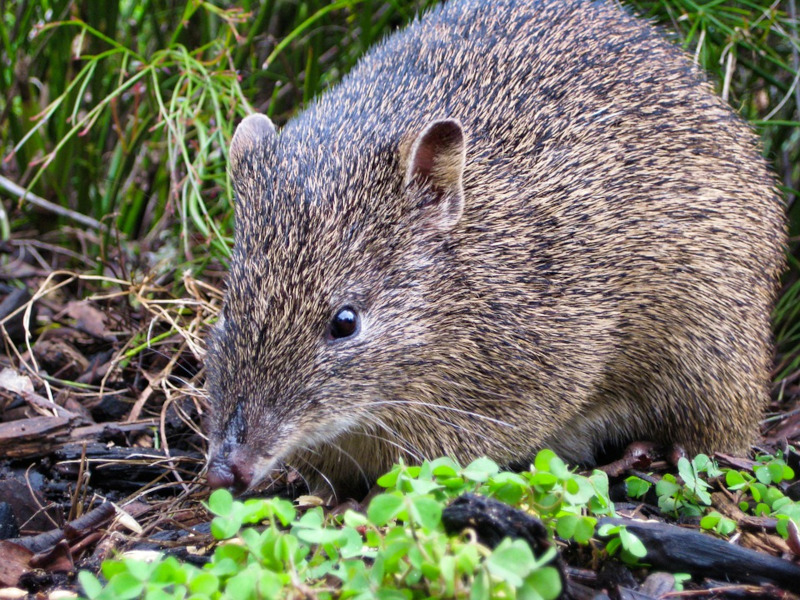
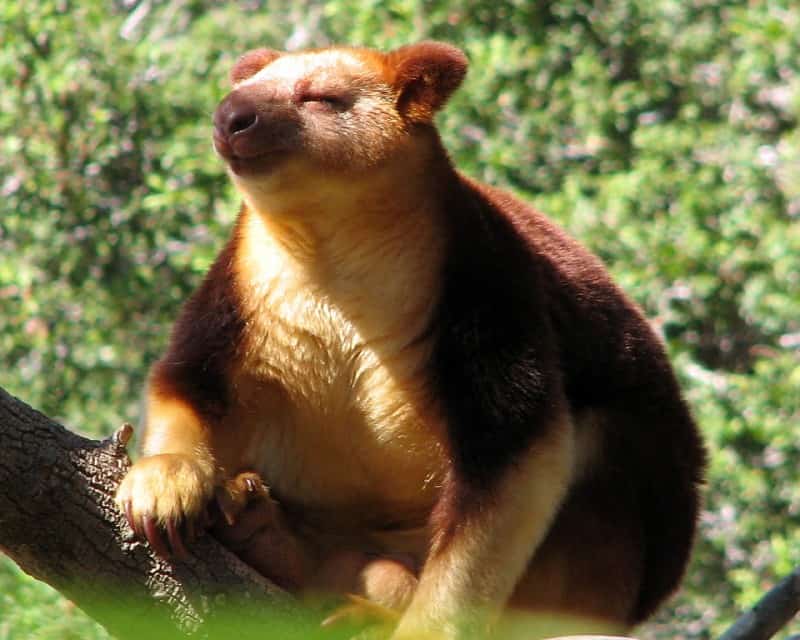

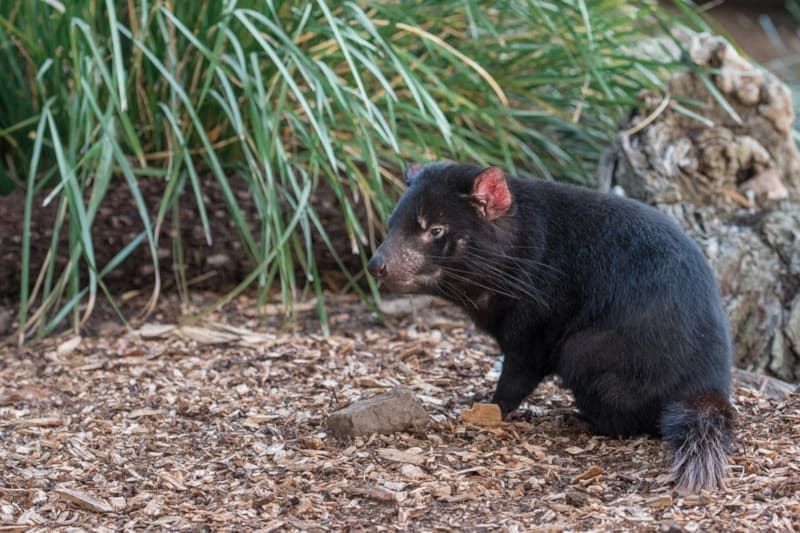
Tasmanian Devil Physical Description
Although the Amazing Tasmanian Devil ranks as the largest animal of its kind, it nevertheless remains relatively small. The magnificent animal does, however, display a moderate degree of sexual dimorphism. In its case, the males attain a slightly larger size than females.
This holds true due to the fact that males usually develop a head-and-body length of about 25.7 in (65.2 cm). The tail of the creature averages a length of roughly 10.2 in (25.8 cm). In terms of weight, the males of the species generally average about 18 lb (8.16 kg).
Yet the females of the species usually only reach about 22 in (57 cm) in head-and-body length. Further, the same females also develop a tail averaging 9.6 in (24.4 cm) in length. But, in terms of weight, these same females only typically reach a weight of about 13.2 lb (6 kg).
In both genders, the front legs grow somewhat longer than the rear legs. This gives the Tasmanian Devil a distinctive gait. In addition, the fur usually presents mainly black. Uneven white spots or splotches also sometimes appear on the rump and chest of the mammal.
- Kingdom: Animalia
- Phylum: Chordata
- Class: Mammalia
- Order: Dasyuromorphia
- Family: Dasyuridae
- Genus: Sarcophilus
- Species: S. harrisii
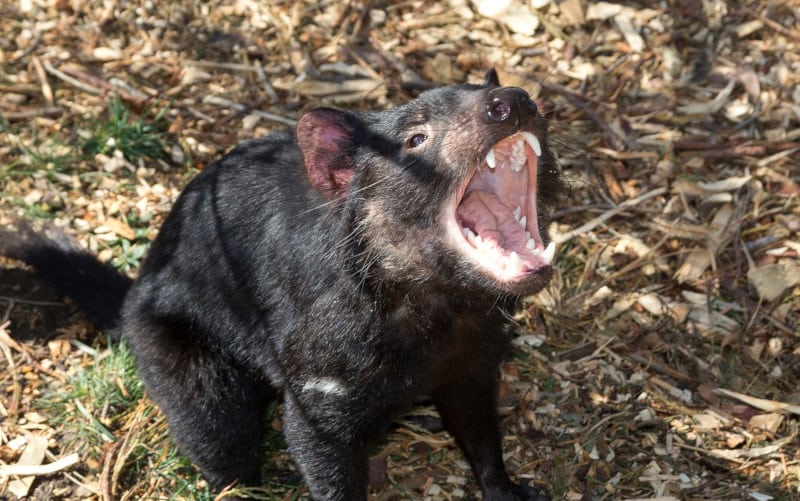
Tasmanian Devil Distribution, Habitat, and Ecology
As the name implies, the Tasmanian Devil is indigenous to the island of Tasmania. Though once present on the mainland of Australia, this now serves as home to all but a handful of individuals in the wild. The only others exist on a tiny island joined to it at high tide.
Within that limited range, however, the mammal proves itself to be highly adaptable. As a result, it presently inhabits every type of habitat on the island. This often even includes the outlying portions of urban areas. This, however, often proves to be to its detriment.
This carnivore also evolved as both nocturnal and crepuscular in nature. The prey of the Tasmanian Devil sometimes includes animals as large as small kangaroos. It most commonly prefers to hunt small prey, though. Being opportunistic, it eats carrion more than it hunts.
Finally, its reputation for aggressive behavior remains quite well deserved. That holds true due to the fact that, mainly living a solitary life, except for mating, males often fight savagely in encounters. Even its mating habits have been referred to as extremely vigorous in nature.
Species Sharing Its Range



Check out our other articles on Earth’s Extremely Threatened Flowers, Giant Trevally, Plitvice Lakes, Socotra Bluet, Spider Tailed Viper, Puffin, Bornean Flat Head Frog, Maned Wolf









Leave a Reply